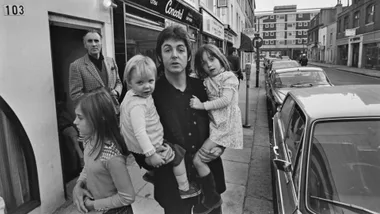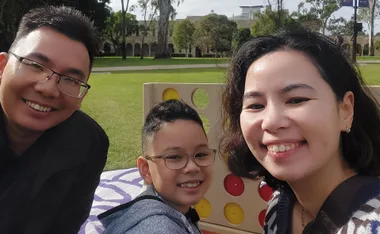Teen pregnancies and STIs are at a record high and Jenny Walsh is convinced there is only one way to reverse the trend — teaching kids more about sex.
I am a sexuality education teacher and writer. I make teaching resources and advise on national strategies, so I work with a lot of different audiences, including parents, children, educators and government departments.
Related: Why girls are having sex at 12
Many parents and teachers are worried about the impact of sexualised images on children, especially primary-aged children — and there is little doubt that the deluge of images that drift past or slam into us every day can increase our anxieties about fitting in to particular views of beauty, relationships and sexual expression.
Beyond anxiety is the justifiable concern that various media content help to create an unhealthy (or should I say unhappy) set of expectations about being sexual, being sexually available, and/or being sexually aggressive.
Parents worry about what to say and when to say it, and most importantly don’t want to say the wrong thing. But they shouldn’t rest too easy in the expectation that schools will be filling the gap.
Despite the worry about the effect of sexualised content, and a swathe of research that documents a less than healthy state of young people’s sexual health, we — that is Australia — has still not managed to implement comprehensive sexuality education programs in most high schools.
So, why is this STILL the case?
The failure to properly address young Australians sexuality education needs may come from the ill-founded belief that talking about sex will lead to young people ‘doing it’.
But the reverse is true. Talking about these issues will not encourage kids to have sex too early.
The research tells us that sex education programs lead to young people putting off having sex until they are older, reducing the chances of getting STIs and unplanned pregnancies and reducing the numbers of sexual partners.
If we allow young people the chance to talk about life, bodies, popularity, friendship, relationships and sex, then they get a chance to check their assumptions about what everyone else is doing and feeling, and reflect on what they want out of life.
Our job, parents and educators both, is to support them in making that happen.
Home is a great place for this conversation to start. Kids do not want to talk with their parents about the nitty gritty of S-E-X, but they do want to know what their parents’ values are — how young women and men should treat each other, and that being sexual is a healthy and potentially lovely part of being human.
School-based programs can provide opportunities for young people to reflect on the same issues in discussion with their peers with the added benefit of working towards some essential educational outcomes, like personal autonomy, knowledge of one’s own and others’ rights and responsibilities, and the capacity to critique media.
Becoming pregnant before you are ready, having sex under pressure, or getting an STI is not going to happen just because you missed out on an education session at school.
Sexual health and a person’s power and choices are more complex than that — but if there never was any education at your school, and if no one at home talked about it, then the chances are higher that you will have sex at a younger age, and without contraception.
The facts: Pregnancy and sexually transmissible infections
Australia’s National Sex Survey indicates that:
Fifty percent of young people have had their first sexual intercourse by the time they are 16.
More than 25 percent of year 10 students and more than 50 percent of year 12 students have had sexual intercourse.
In 2008, slightly more than 25 percent of all chlamydia infections were in the 15 to 19 age group.
In that age group, women were nearly three times more likely to get chlamydia than men.
Chlamydia infections have increased across all age groups by 60 percent between 2004 and 2008, but most steeply in the 15 to 29 age group.
Other countries have enjoyed great success on promoting sexual health among their.
Related: What all parents need to know about sexting
A comparison of the incidences of teenage pregnancy between countries of similar wealth show the startling effect of policy, education and culture.
The fertility rate of Australian teenagers is relatively high. Unicef’s teenage fertility ‘league table’ shows the Netherlands has about 12 pregnancies per 1000 young women under 19, Germany, 18 per 1000, Australia is 44 per 1000 and the US 85 per 1000.
Jenny Walsh works for the Australian Research Centre in Sex, Health and Society.
Your say: Do you think there should be more sex education in Australian schools?
Video: Sexting and our teens


.png?resize=380%2C285)








